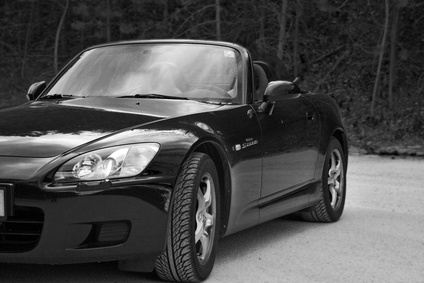
Introduced in 1988, Honda's B16-series motors in many ways formed the foundation for all of the company's future four-cylinder efforts. These engines were among the first to carry the company's now-signature VTEC system (whether the B16 or the V6 NSX was the actual first is still a point of contention), which uses oil pressure to actuate a "race"-profile camshaft at high RPM. Clean, efficient and powerful, it's small wonder that the B16 is as popular today as it was decades ago.
VTEC comes in two basic flavors: the "race"-cam standard used for older models (B16A1 through A3) and the "emissions"-cam used for newer ones. If you have an A3 or earlier engine, save yourself some money and forget the camshaft swap. The cams used on these engines are already optimized for high rpm, so any gains here would be pretty minimal. Only the later "emissions" models (which used very small cams for low rpm and a "normal" cam for high rpm) can stand to benefit from a camshaft swap.
One of the first tuning tricks ever applied to the B16 was adjusting the VTEC engagement point. Engaging the system at anything below 2,000 rpm will result in a massive loss of oil pressure and subsequent engine damage, and anything above 6,500 is too close to the engine's redline to do any good. 5,500 to 5,700 is good for a stock engine, 4,500 to 4,800 is good if you have an aftermarket intake and exhaust, and 3,000 is close to the ideal for supercharged engines.
All B16s came with compression ratios of between 10.2 and 10.4 to 1. That's fine for a high-rpm, naturally aspirated (non turbo/supercharged) engine, but is a bit high for any turbo/supercharged application. Even with the Honda motor's strong pistons and naturally detonation-resistant design, anything over 10 to 1 is marginal for forced induction. If you're going to lower compression for use with a turbo/supercharger, spend the money and buy lower compression pistons; simply installing a thicker head gasket will create a potential weak spot in your pressurized engine.
At some point you're going to hit a wall (usually around 200 horsepower on this engine) in power production that can only be overcome in one of three ways: nitrous oxide, forced induction or an increase in displacement. B16 engines are generally good for at least a 50 shot of nitrous, as much as 75 if you're brave. An internally stock engine in good shape is good for between 6 and 9 psi of turbo/supercharger boost, which equates to between 80 and 100 horsepower over stock.
Although you might be tempted to increase displacement simply by boring the engine and installing new pistons, don't do it. You'll need to take the stock bores out to at least 85 mm to make any noticeable difference in displacement, which will require re-sleeving the cylinder bores in the block. The sleeves themselves aren't too expensive, but count on the machine work driving you poor. In the end, it's cheaper and easier to just install a stroker crankshaft. A stroker approach means not only more displacement, but an opportunity to replace the rods and pistons as well.